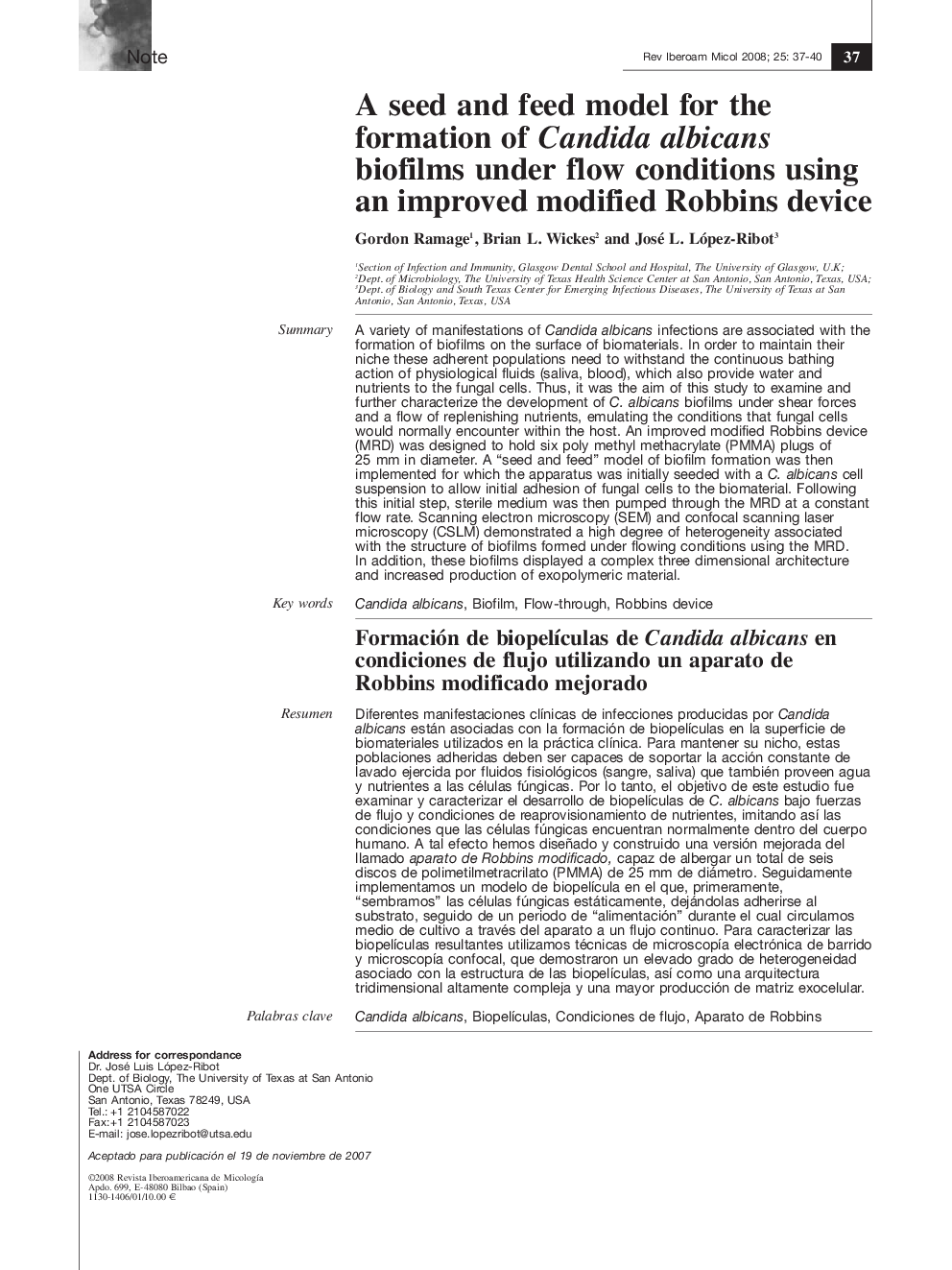| Article ID | Journal | Published Year | Pages | File Type |
|---|---|---|---|---|
| 3419108 | Revista Iberoamericana de Micología | 2008 | 4 Pages |
Abstract
A variety of manifestations of Candida albicans infections are associated with the formation of biofilms on the surface of biomaterials. In order to maintain their niche these adherent populations need to withstand the continuous bathing action of physiological fluids (saliva, blood), which also provide water and nutrients to the fungal cells. Thus, it was the aim of this study to examine and further characterize the development of C. albicans biofilms under shear forces and a flow of replenishing nutrients, emulating the conditions that fungal cells would normally encounter within the host. An improved modified Robbins device (MRD) was designed to hold six poly methyl methacrylate (PMMA) plugs of 25Â mm in diameter. A “seed and feed” model of biofilm formation was then implemented for which the apparatus was initially seeded with a C. albicans cell suspension to allow initial adhesion of fungal cells to the biomaterial. Following this initial step, sterile medium was then pumped through the MRD at a constant flow rate. Scanning electron microscopy (SEM) and confocal scanning laser microscopy (CSLM) demonstrated a high degree of heterogeneity associated with the structure of biofilms formed under flowing conditions using the MRD. In addition, these biofilms displayed a complex three dimensional architecture and increased production of exopolymeric material.
Related Topics
Life Sciences
Immunology and Microbiology
Microbiology
Authors
Gordon Ramage, Brian L. Wickes, José L. López-Ribot,
